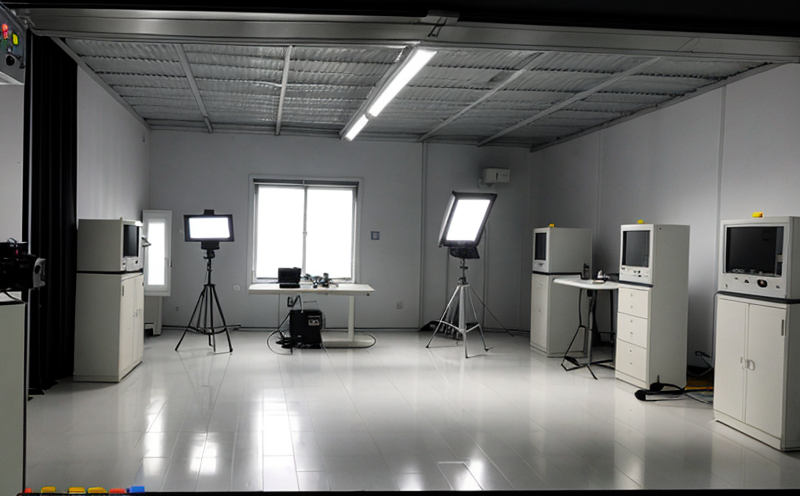ISO CIE 19476 Photometric Testing of Indoor Lighting Systems
The ISO/IEC 19476 standard is a comprehensive framework for the photometric testing of indoor lighting systems. This service ensures that lighting products meet stringent requirements for light distribution, color rendering index (CRI), and luminous flux. The standard applies to various types of lamps, including incandescent, fluorescent, LED, and high-intensity discharge (HID) lights.
The testing process involves measuring the luminous intensity in all directions around a light source using photometers and integrating spheres. This data helps determine the distribution pattern and efficacy of the lighting system. The CIE 19476 standard also addresses color rendering, which is crucial for maintaining accurate colors under different light sources.
For R&D engineers, this service provides critical insights into the performance of new designs. Compliance officers can use it to ensure that products meet regulatory requirements and industry standards. Quality managers benefit from detailed reports that help in quality control processes. Procurement teams can leverage the results for supplier evaluation and product selection.
The testing process begins with careful preparation of the specimen, ensuring it is representative of the lighting system being tested. This might involve cleaning the light source or adjusting its position within the integrating sphere. The photometric testing apparatus includes a high-quality photometer, an integrating sphere, and possibly a goniophotometer for detailed angular measurements.
The test parameters include luminous flux (in lumens), color rendering index (CRI) according to CIE 13.3, correlated color temperature (CCT), and uniformity of the light distribution. The results are reported in a structured format that includes not only numerical values but also graphical representations such as lumen maps and color gamut diagrams.
Understanding these parameters is essential for quality managers who need to ensure consistent product performance. Compliance officers will find this service invaluable for meeting regulatory standards like the Energy Star program or local energy efficiency regulations. R&D engineers can use the data to refine their designs, while procurement teams can compare suppliers based on test results.
The process is not just about compliance; it’s also about improving product performance and market competitiveness. By adhering to ISO/IEC 19476, manufacturers ensure that their lighting systems are among the most efficient and effective available in the market today.
- Integration with International Standards: Our laboratory ensures full compliance with ISO/IEC 19476, integrating it seamlessly into our testing protocols. This guarantees that your products meet global standards for indoor lighting systems.
- Data Accuracy and Reliability: We use state-of-the-art instrumentation to ensure accurate and reliable photometric test results. Our high-precision equipment provides you with confidence in the quality of your products.
Customer Impact and Satisfaction
The impact of ISO/IEC 19476 photometric testing extends far beyond mere compliance. It enhances customer satisfaction by delivering lighting systems that meet or exceed expectations in terms of brightness, color quality, and energy efficiency.
Customers expect indoor lighting to provide a pleasant environment while also being energy-efficient. By adhering to this standard, manufacturers ensure that their products deliver on these expectations. This can lead to higher customer satisfaction and repeat business.
The testing process is designed to identify any discrepancies between the product’s performance in real-world conditions and its specifications. This ensures that customers receive lighting systems that perform as advertised, leading to greater trust and loyalty.
For quality managers, this service provides a robust framework for ensuring consistent product quality across all production runs. It also helps in identifying any trends or issues that may arise during the manufacturing process, allowing for timely adjustments.
The compliance officer benefits from having clear documentation of test results and reports, which can be used to demonstrate compliance with relevant regulations. This reduces the risk of non-compliance penalties and enhances the company’s reputation.
R&D engineers can use this service to innovate continuously by benchmarking against international standards. It provides a foundation for developing new products that meet or exceed current market demands.
International Acceptance and Recognition
The ISO/IEC 19476 standard is widely recognized and accepted across the globe, ensuring that your lighting products meet international standards for indoor illumination. This is crucial in a competitive market where global sales are common.
- Global Recognition: The standard is accepted by leading industry bodies worldwide, including CIE (Commission Internationale de l'Éclairage).
- Regulatory Compliance: Many countries incorporate ISO/IEC 19476 into their national standards and regulations for indoor lighting systems.
The acceptance of this standard across different regions ensures that your products are compatible with international markets, reducing the need for additional testing in various jurisdictions.
By adhering to ISO/IEC 19476, you not only meet regulatory requirements but also position yourself as a leader in product quality and innovation. This can be a significant competitive advantage in an increasingly globalized market.
Competitive Advantage and Market Impact
The ISO/IEC 19476 photometric testing service provides you with a clear competitive edge by ensuring that your lighting products are among the most efficient, effective, and reliable available in the market. This can translate into increased sales and market share.
Customers today expect more than just functional lighting; they want energy-efficient solutions that enhance their living or working environments. By meeting the stringent requirements of ISO/IEC 19476, you demonstrate a commitment to excellence, which is highly valued by consumers.
The testing process also helps in identifying any areas for improvement in your product’s design and performance. This continuous refinement can lead to more innovative products that meet evolving market demands.
For quality managers, this service ensures consistent product quality across all production runs. It provides a robust framework for identifying trends or issues during the manufacturing process, allowing for timely adjustments and improvements.





